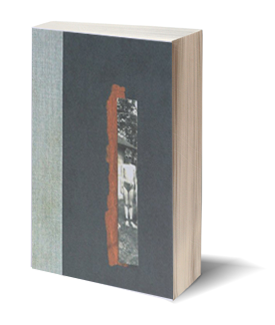NoxBy Anne Carson |
 |
|---|
Reviewed by Lily Hoang
To mourn (v): to be anxious or worried, to care, to have regard; to yearn, to hanker; to long to do something; to feel or express sorrow, grief, or regret; to lament or grieve over a death; to utter lamentations, etc., to someone; to make a low inarticulate sound indicative of grief, pain, hunger, etc.; to moan.
Anne Carson’s Nox is mourning, for the loss of her brother. Yes, that’s obvious, but it’s more than that. It’s a mourning for the inadequacy of language, of translation, of understanding: Despite her vast knowledge of language, translation, and arguably her own brother, Carson is vulnerable. She leaves this book, a remembrance.
Throughout this novel—and I’m calling it a novel because it functions as so many Modernist and Post-Modernist novels do, though it’s technically categorized as “poetry”—Carson reflexively attends to her role as a Classicist and poet:
I want to explain about the Catullus poem (101). Catullus wrote poem 101 for his brother who died in the Troad. Nothing at all is known of the brother except his death. Catullus appears to have travelled form Verona to Asia Minor to stand at the grave. Perhaps he recited the elegy there. I have loved this poem since the first time I read it in high school Latin class and I have tried to translate it a number of times. Nothing in English can capture the passionate, slow surface of Roman elegy. No one (even in Latin) can approximate Catullan diction, which at its most sorrowful has an air of deep festivity, like one of those trees that turns all its leaves over, silver, in the wind. I never arrived at the translation I would have liked to do of poem 101. But over the years of working at it, I came to think of translating as a room, not exactly an unknown room, where one gropes for a light switch. I guess it never ends. A brother never ends. I prowl him. He does not end.
This novel is an extended translation of Catullus 101. Each word in the poem is given a page’s worth of definition, etymology, lists and lists. The book opens with the poem in Latin, and roughly two-thirds of the way through the book, Carson puts forth her own translation. It is through the accumulation of these definitions and translation that the reader can understand her obsession and sadness, her desire to communicate. Carson’s translation of the poem, as she admits, may be flawed, may be inadequate, may be unable to capture the ache and delight of Catullus, but this novel, with its memories encased in simple but enduring sentences, tightly cradles every sorrow and festivity. It offers her brother his never-ending, and so, in these pages, he drifts between smeared photographs and real and imagined letters.
Written as collage—exhaustive definitions never fully defining, torn and obscured letters, poems, stapled photographs, a critique of history grounded in Greek philosophers, and glossed memories—Nox is a lamentation, exposed in a way that only grief can be exposed: through obsession and meandering. Carson’s narrative, clear and cutting and painful, is not linear—but then neither is history, neither is memory.
This novel is not just a collection of definitions, delineations, and pictures. Like all of her books, language pushes the reader to turn another page, entranced. For instance, Carson mourns:
Prowling the meanings of a word, prowling the history of a person, no use expecting a flood of light. Human words have no main switch. But all those little kidnaps in the dark. And then the luminous, big, shivering, discandied, unrepentant, barking web of them that hangs in your mind when you turn back to the page you were trying to translate.
Even in Carson’s discussion of translation, the reader can get lost in the splendor of words, only to emerge wiser, more forlorn, unhinged.
Still, this book is not without its flaws. Patchwork novels are difficult, and Carson’s pieces do not always adhere. There are pages where the “art” of the book overshadows its content, where scraps of tangible memory clutter when it ought to instead clean. These disruptions in the text create an inconsistency to the reading experience; however, they allow for breath, for an opportunity for the reader to relax before returning to Carson’s elegy, her brother’s eulogy.
Finally, it would be impossible to discuss this book without addressing its form. The book is a box: inside, the pages are sewn together, accordioned, to be unscrolled, leafed through with care. As an object, it’s imposing, taking up more space on my bookshelf than Bolano’s 2666 or any Norton anthology, but inside, it’s the kind of book you want to cradle, a scrapbook that may fall apart if not handled delicately, because ultimately that’s what memory is. That’s what mourning is.
